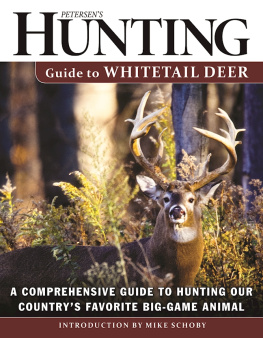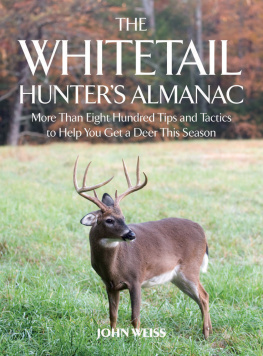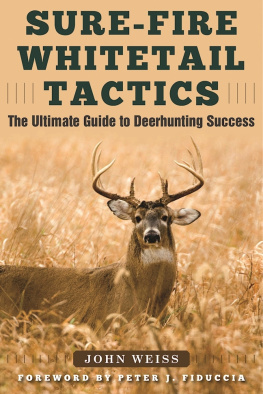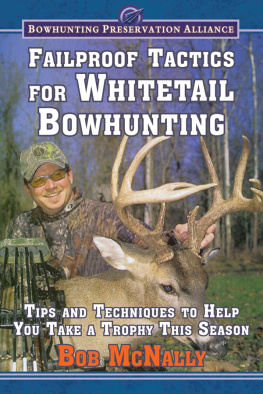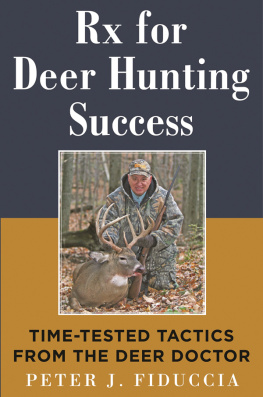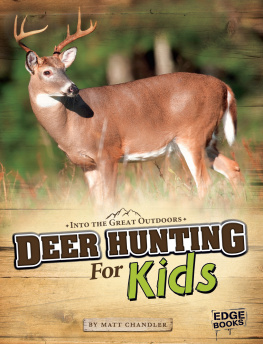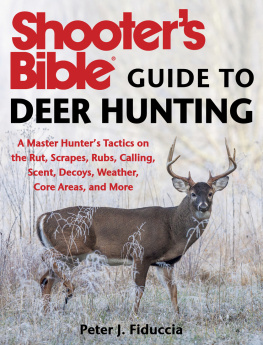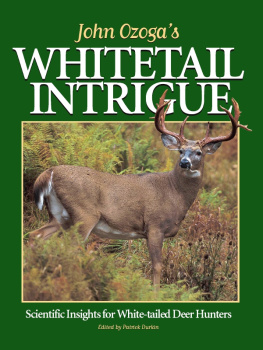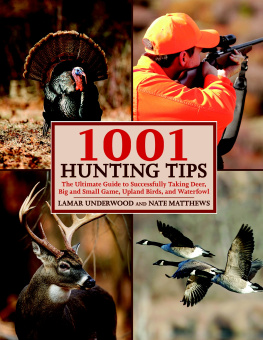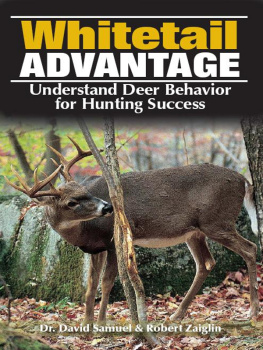Copyright 2016 by Outdoor Sportsman Group
All rights reserved. No part of this book may be reproduced in any manner without the express written consent of the publisher, except in the case of brief excerpts in critical reviews or articles. All inquiries should be addressed to Skyhorse Publishing, 307 West 36th Street, 11th Floor, New York, NY 10018.
Skyhorse Publishing books may be purchased in bulk at special discounts for sales promotion, corporate gifts, fund-raising, or educational purposes. Special editions can also be created to specifications. For details, contact the Special Sales Department, Skyhorse Publishing, 307 West 36th Street, 11th Floor, New York, NY 10018 or .
Skyhorse and Skyhorse Publishing are registered trademarks of Skyhorse Publishing, Inc., a Delaware corporation.
Visit our website at www.skyhorsepublishing.com.
10 9 8 7 6 5 4 3 2 1
Library of Congress Cataloging-in-Publication Data is available on file.
Cover design by Tom Lau
Cover photo credit: Dale C. Spartas
Print ISBN: 978-1-5107-1312-3
Ebook ISBN: 978-1-5107-1318-5
Printed in China
TABLE OF CONTENTS
INTRODUCTION
By Mike Schoby, Editor, Petersens Hunting Magazine
It has been twenty-five years since I shot my first whitetail and I am still amazed by Odocoileus virginianus . Think about itwhat other big game species inhabits such varied terrain, across a massively broad range, are so intelligent and adaptable, and provided millions of hunters an incredible hunting opportunity, not to mention a wonderful food source?
As I wrote this, I paused to look out of my window at the distant snow-capped Bitterroot Mountains that hem in my Western Montana home. Several hundred yards from my window, a pair of whitetail does saunter through an aspen grove surrounded by sage flatsnot what most would think of as typical whitetail habitat, but there they are, thriving in a place more commonly associated with elk and mule deer.
And that is really what makes the whitetail so specialthey thrive nearly coast to coast. Over the years, I have hunted them from Washington all the way to New Brunswick and from the Mexican border in Texas to our northern border in Wisconsin. And that is just in the continental United Statesno other species transcends borders like the whitetail. Incredible hunting can be had in Canada and Mexico with subspecies stretching all the way to South America.
If that isnt enough range for you, consider the fact that North American whitetails have been transplanted around the world to places like New Zealand and Norway where they thrivespawning a whitetail culture of rattling, scents, and treestands to countries not previously accustomed to such.
A hunter could spend a lifetime hunting whitetails in a different state/province/country every year and not see it all. That is truly impressive, but what is even more impressive is no matter where you live, you really dont ever have to travel far to hunt Americas most popular deer. That is the real key to their charmthey are everyman-accessible; from a patch of state ground in Pennsylvania to the family farm in Iowa.
Sure, a chance at a huge buck increases on well-managed (and often high dollar) private land, but it is not always the case. Peruse the record books, and do some research on the top twenty entries and see how many of those bucks came from guided or high dollar huntsvery few. The story is almost always the same, magnificent bucks are killed every year by an average Joe, who got off work a couple hours early, ran to his stand, and lo and behold a world-class deer strolled by.
I like to think about that every time I hunt whitetails. While my odds of ever winning the lottery are slim to none, I know that no matter where I am hunting there is always a chance of a record-class buck trotting by in pursuit of a hot doe. Even if no wall-hanger appears, there is always an excellent chance a doe will appear to fill my freezer and that is reason enough to pursue this magnificent animal.
SECTION ONE
FEATURES

Photo Credit: Donald M. Jones
F ive days before the Kansas rifle season, I sat in my stand with my mom and aunt. During the spring and summer, Id burned and, with a lot of help, cleared, leveled and planted. Thanks to perfect rains, my winter wheat had come up nicely, and the deer loved it. Now, on the eve of the season, I was hoping to show the ladies some of our Kansas whitetails. Of course, I was also doing some last-minute scouting.
That was the slowest of any evening I sat that stand, but two of the six does that came in fed right in front of us. We had a great evening, not too cold, and just when it was getting dim, I saw one more deer step out of the woods. It was so dark I was the only one to see him, but through good glass I saw him very clearly. He was tall, wide and heavy, his only flaw being he was missing his G-4 on one side, making him a nine-pointer. He came in like he owned the place, and I was pretty sure that when the season opened Id own him if I wanted to.
Two days laterthree days before rifle seasonI borrowed my neighbors Kawasaki mule, and at noon on a sunny day we took a little family excursion around the farm. We roused several does from their beds, and then, along a tree line, I caught the flash of an antler. Oh, Lord, this was a buck. He was a dream Kansas whitetail, a perfect 10-pointer, heavy and tall. He was the buck I wanted to find when rifle season opened.

At their Kansas place, the author and his family dont take their scouting seriously, but it was during this family game drive that the biggest buck was seen. The author is flanked, left to right, by his dads sister, Betty Reese; his mom, Jeanne Boddington; and his daughter, Brittany.
Photo Credit: Craig Boddington

The authors primary food plot is winter wheat, and the deer seemed to love it. From late October through the rifle season, the deer hit it hard every evening. However, after rifle season started, the bucks were moving only at night.
Photo Credit: Craig Boddington
FIRST SEASON
Do you want suspense, or do you want honesty? Forget the former; deal with the latter: I never saw either buck again. Anybody would have shot that 10-pointerand everybody in the neighborhood would have known. So Im pretty sure he went to ground. The other buck, well, both my wife, Donna, and my buddy Jim Jurad, who joined us for the first part of the season, saw pretty good bucks in poor light, but either they werent sure enough to shoot or they chose to hold out. If they saw that nine-pointer, their decisions were poor.

Oklahomas sand hills are unusual habitat, scenic in their way and very good whitetail habitat. Theres a good buck out there, and Joey Meibergen is trying to find him, but the buck vanished into one of the countless little draws.

